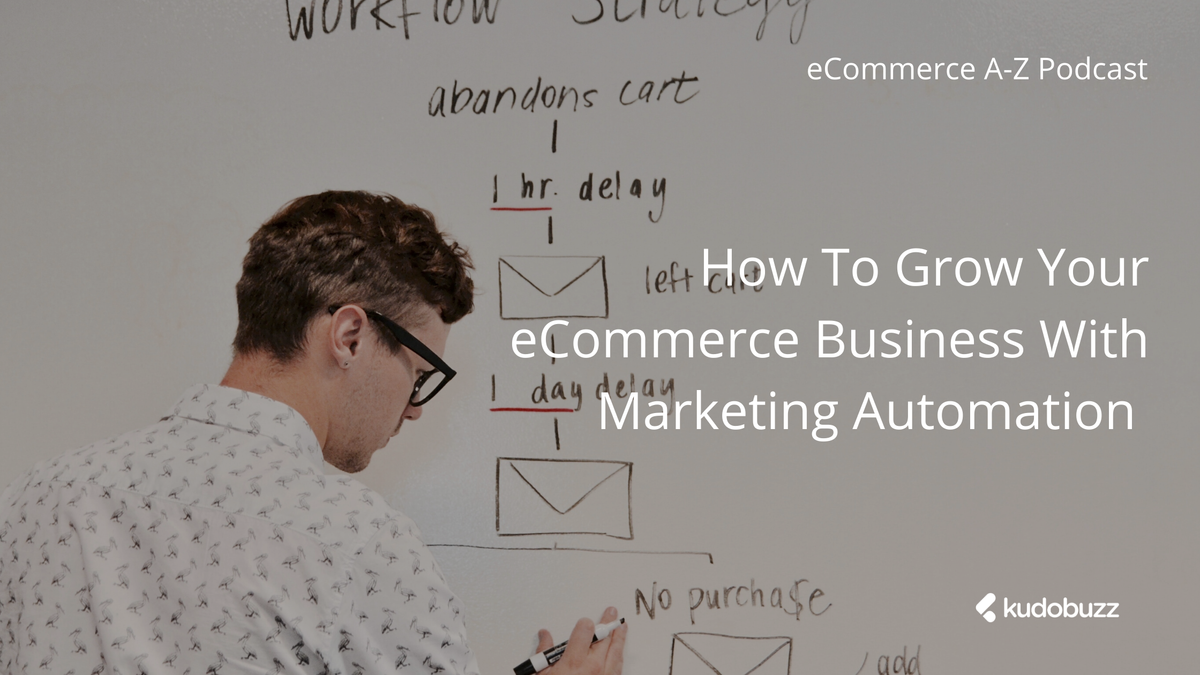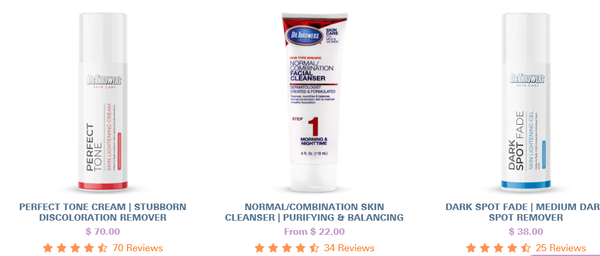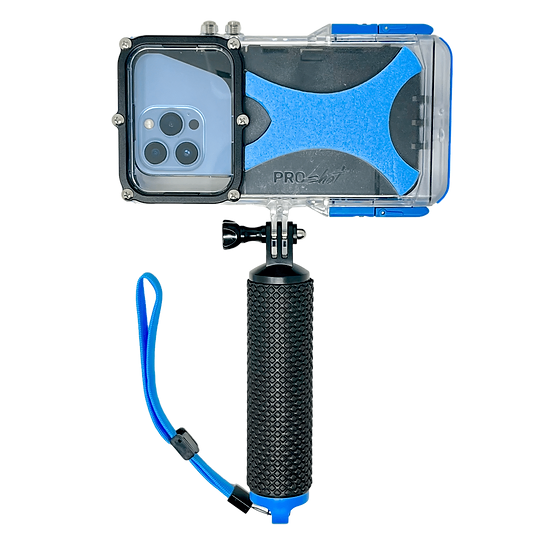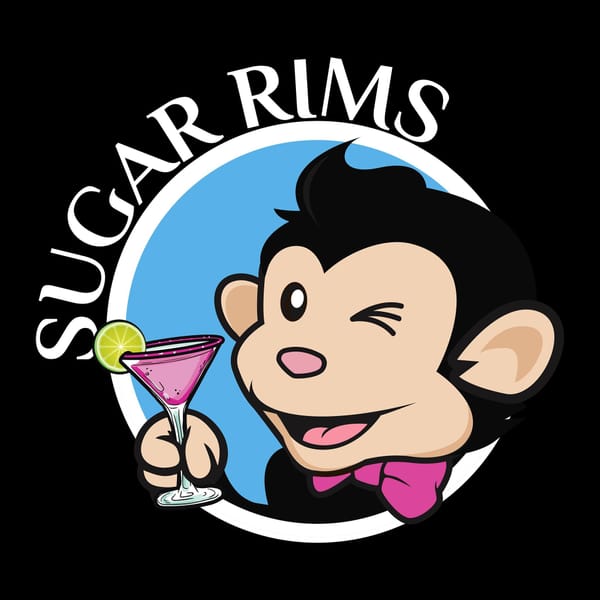In this episode, we focus on how eCommerce merchants can use marketing automation to grow their businesses and increase revenue. We touch on email marketing, retargeting ads, lead generation and how to grow an email list. Our guest was Giovanni Perri, the Founder of The Growth Hustlers Agency one of London’s top growth marketing agencies.
Introduction
User acquisition is very hard and sometimes it can be super hard. And if you haven’t made a name for yourself, it's even harder because people don’t know you. So the user acquisition process can be very expensive. In short marketing automation can help maintain those people that you have already acquired.
Dzifa Mensah
Hi There, Welcome to the eCommerce A-Z podcast, where we teach you how to start and grow a thriving eCommerce business.
Our guest for today is Giovanni Perri. Giovanni is the founder of The Growth Hustlers, one of London’s top growth marketing agencies. His work covers all in one Growth Services, Web and App Analytics, Marketing Automation, Conversion Rate Optimization and Traction Testing Marketing. He has worked with different companies to grow their revenue by creating customised solutions to meet their needs.
In this episode, we focus on how eCommerce merchants can use marketing automation to grow their businesses and increase revenue. We touch on email marketing, retargeting ads, lead generation and how to grow an email list.
My name is Dzifa Mensah and I am the host of the eCommerce A-Z podcast.
Dzifa Mensah
What does marketing automation mean for an eCommerce business?
Giovanni Perri
It can mean a lot and it will do a lot for you, for the owner, the team and for the business overall. Implementing a solid marketing automation stack across all work at least for the most important stage of the user journey will massively help businesses improve their returns on investments and also for the optimized user acquisition efforts I would say. When I say this I mean user acquisition is very hard and sometimes it can be super hard and if you haven’t made a name for yourself, it’s even harder because people don’t know you. So the user acquisition process can be very expensive. In short marketing automation can help you maintain those people that you have already acquired. So the returning visitor becomes more important because it will help you bring down the blended cost per acquisition overall. For example, doing marketing automation means creating natural campaigns or journeys, whatever you want to call them, they are going to help you convert into the most supportive stages, from one stage to another. For example from targeting a simple website visit, to adding to cart for example or to drop in on checkout, what you can do through marketing automation is that you can pick up these users that are dropping off and improve and maximize your return on investment.
Dzifa Mensah
Could you give an idea on the process you would follow for a typical marketing automation?
Giovanni Perri
Yeah, absolutely so it can be a little technical sometimes so I am going to try to make it simple as possible. So you have to, the first thing you want to do is you want to look at your current stack, so if you have any form of email marketing activity, SMS activity or retargeting, you want to look at what you have and come up with some reports to identify the success of the current campaigns, how everything is doing. Another thing you want to do is, you want to then start identifying stages of the flow, so let’s pretend you have never done this and you just want to have an understanding, you want your team to really understand what the different stages of the flow are in the user acquisition flow right. So from a website visit, to purchase right. So once you identify these stages, you literally write them down like a flow. You write them down then once you identify these, you want to sort of report on them. If you already have the data and see where the biggest drop-offs are. For some stages for example, some people might have a problem at the awareness stage, or at the acquisition stage. So you can get a lot of traffic to your website, but then a very small percentage of these people are sort of signing up or giving you a name or signing up to a newsletter. In that case, you want to start improving that, if the drop off office is very big, and you want to identify all of these stages with a very high drop off to sort of coming up with a prioritized list of user journeys that you want to stop building on. Once you have defined what stages you want to tackle first, you then go in and start coming up with a number of communications for each selected journey that you want to push out. So you want to identify the channels that you want to use, for example some businesses might use retargeting on Facebook, so that is also a way of marketing automation. And definitely, email is a very strong stage so is definitely one of the core channels you want to use, and sometimes you can use push notifications and SMS. So it would all depend on what kind of information you get from the customer or from your potential customer. So whatever you have you want to try and leverage and you want to make sure that you come up with segments and journeys and matching campaigns that are specifically tailored for every step of the flow. Just to give you a very quick example, like if you have someone come unto the site and they sign up, so you have a signup process, that is a stage you want to look at. How many people that have signed up then drop off on the add to cart stage? How many of those people are actually adding to cart? If there is a very big drop off, you want to make sure you have some marketing automation set up to optimize that flow, sort of that stage. Another thing that you have to do after identifying these journeys and identifying which channels you want to use, you want to come up with the right content, which is tailored specifically for that stage and for the stage of the user at that point. So you don’t want to be sending out a content that has nothing to do with the stage they are at right. You want to tailor that service there. Then obviously you have to build all of it. So this is sort of the strategy side of things where you define what areas you want to dive in and what journeys you want to tackle. Then you have to actually create, start creating these campaigns. You will need content creation. You will need to define the number of emails or number of SMS, the delays you have in between the different sends let’s say. You don’t want to spam people at the same time. It’s a delicate process so you really need to know the user as well. After this, you then start building the journeys on whatever platform you have chosen to use. There are plenty of platforms out there that you can use. And building the journey means having a few things. So you need lists of people, and you need to make sure that these lists are being updated with all the events that are happening on site. So just to give you an example, if I signed up to a website but I haven’t added to cart, then I want to the event to trigger that I signed up but I haven’t added up to card so that we have smart segments that put me in specific lists which will then trigger the journey. Then we want to obviously build all these journeys, I put all these pieces together and push them to live. Then we want to be reporting and analyzing the data and how these are doing, so that is a very important step as well because you want to improve as you go along, so you want to keep improving. In short, this is the process people should sort of go through.
Dzifa Mensah
Okay, when people land on your website, you can give them the opportunity to sign up right ahead of time or let them sign up at the checkout point. Which would you prefer?
Giovanni Perri
You can try both, you can have some like, obviously, the flow where they purchase, the purchase flow when they get to the add to cart checkout flow etc. needs to be as smooth as possible and this is part of conversion rate optimization. So you want to reduce that drop off as much as possible on-site and you want to maximize the amount of website visitors to become a customer at those moments. So you don’t want to lose them. Then maybe at the same time you may can have users that go to other sections of the site such as the blog, which could be really optimized for acquisition of newsletter. So every section of the website needs to be optimized but this is part of conversion rate optimization. For what concerns like the success of getting someone who signed up as a lead, to then come back and go through the purchase the flow, the numbers are usually lower in terms of conversion than like a normal flow where someone comes in and goes in the flow and buys straight away. Because there is breaks, so they came to the site, they signed up to a newsletter, so they were interested in the newsletter, so the intent sort of changes. My final answer would be if you can get the website visitor to go through the flow or complete the flow and become like a purchase on the day. But then marketing automation will then definitely help you to maximize for those people who dropped off during the flow.
Dzifa Mensah
Let’s talk about remarketing ads, are they still relevant?
Giovanni Perri
Yes, they are. I would say, this is the short answer, they definitely are. The reason why I say this is because this is also part of marketing automation, remarketing or retargeting ads across different platforms like Facebook or Google, or Twitter any platform you can think of, can be very powerful. And the reason is cause you are sort of following the user across different platforms that they are visiting after they visited your site. Retargeting can be very powerful at the very top of the flow stage, which is when someone has visited your site, they haven’t signed up or they haven’t left an email so you don’t have a contact yet, they haven’t become a lead either right, so what you want to do in that case, is create some retargeting campaigns across potentially multiple platforms such as, I was saying Adwords Retargeting, Facebook retargeting ads to make sure they come back to decide and they leave their email address or they go through the purchase. For example, you can retarget in many different ways. So let’s say, I visited a site and I opened a specific page for a specific product right. How powerful would that be if I could, and I know that we can retarget someone on different platforms and show them the exact product that they were looking at? That can be extremely powerful but they haven’t bought yet. Let pretend I come to the site, visit a product page and then also add to cart. How powerful would it be to be able to retarget people that have already added to cart of specific products? So, for example, we can show them their specific product that they added to cart with specific ad copy that says don’t forget to complete your order. Is this something you still need? You can tailor the message depending on where the users got to. So definitely very very powerful still and I believe it should be something. Obviously it has a cost as well. We need to note because you have to pay for clicks. So you need to also consider your budget. If you do marketing automation, you are paying a platform for marketing automation, doing your email side of things for example, apart from the fixed cost of that specific platform, you don’t have any other cost to send out emails. But if you do include retargeting, you will have extra cost on extra platforms that you are using such as Facebook and Adwords. So you have to evaluate budget as well, but definitely something to consider and something that can support email marketing for example or SMS marketing.
Message from sponsor
The eCommerce A-Z podcast is brought to you by Kudobuzz Review. Over 70% of online shoppers refer to reviews before making a purchase, according to them reviews serve as social proof and aids them in making purchase decisions. Collect reviews and display them on your website to convert your visitors to buyers. Join over 25,000 online merchants in the Kudobuzz family and start boosting your sales now. Kudobuzz Review App is available on Shopify, Bigcommerce, Wix, Weebly and Wordpress. Check out kudobuzz.com for more.
Dzifa Mensah
Emails are probably the most personalized way of reaching out to people around this time and so they are very powerful. What are some of the email marketing campaigns that every eCommerce merchant should have?
Giovanni Perri
If you look from an eCommerce side of things, you can only do email marketing whenever you acquire an email. That’s like completely logical. So, If you can acquire the email as soon as possible, that will allow you to have emails go out for the following stages if they haven’t completed them. For example, if you do manage to acquire an email soon after there is a website visit before entering the flow which is very complicated, but I am just making an assumption, you will then be able to email this person wherever they dropped off within the flow. In a way, the sooner you get the email, the better it is in terms of marketing automation and what you will then be able to create from the email marketing side of things. If you do get the email only at the end of the flow, so let’s say they have to create an email on their final purchase so when they complete the checkout, then what you can do with those emails is obviously you can create journeys to get people back into buying again. So you can really maximize the returning users so what you know about the users which is powerful information which you have. So you want them to never forget you. In that case, you would push them into a list of people who have already purchased for example at least one item. And the journey that you can create, the email you can send these people is just like for example emails about your company or new products or something else that you have added to the website. So what would you be interested in? What you will know about this user is what they bought and also you would have a track of all the pages they visited. So you can tailor the email to the specific product that they might be interested in and then you can advertise products that are relevant to what he purchased at first. That is something very powerful that you can do after purchase, but as I was saying, if you can acquire the email before, you can do a lot more work. For example, let’s say that someone is simply signing up to the newsletter, what you can do is you can generate a flow of emails that can be very informative. So you can assume if they signed up to the newsletter, they obviously want to not only receive the newsletter that they signed for but they might want to receive other communications that you can also fit in and try and squeeze into purchasing. So you want to do this but you want to be careful how you do it. You don’t want to be spamming but you want to maximize as much as possible the emails that you have acquired. And where there have been users that have purchased, you want to be able to squeeze out of them as much as possible as well by providing value of course because they are probably buying things valuable for them but since they are already your customers. If they were happy about the purchase, or you gave a good service and then a good product, then they most likely to come back. So maximizing on returning visitors is very important mostly because acquiring new users is very expensive and can be very hard to get right.
Dzifa Mensah
I totally agree. So what resources are needed to build a marketing automation stack?
Giovanni Perri
Obviously, there is like the channels and the software you will need and there is the team, the expertise you will need. In terms of resources I would say, the most important ones, starting from the team, you will definitely need one developer, that can help you out with the events that are triggered on the websites, and what they can do is they can make sure that these events are reflecting into the platform, the marketing automation platform you chose. It is very important obviously, so I am going to give you an example as well so it makes sense. By event I mean if someone has and again let go back to add to cart, have they added to cart, so maybe someone has visited a product page but they haven’t added to cart. So what you want to be able do is you want to put them into a bucket that says this person has visited a product page but they dropped off and they haven’t added to cart. So in that case, you want to create a specific list for that. You need developer help to make sure that those events triggered on the site are reflecting unto the platform. Another very important role you need is you need a marketing expert or a marketing guru lets say, someone that can manage, he can sort of project manage this producing a marketing automation stack. This means he will be going through what marketing platform to use, and why that specific marketing platform, what events are needed for every specific journey, what criteria are needed to keep people into each marketing list and move them from a list to another and then obviously you need to define what journeys and how many emails and how many SMS and what kind of retargeting campaigns, do you want to use push notifications, and what kind of delays you want to have, what kind of landing pages you want. So this is sort of a marketing guru I would call him will do, so he will define these things and call your developer. Also you will need content writers, that is super important. The content is extremely important. You want to be able to provide the right content at the right time. You want to be able to create emails, SMS or retargeting campaigns. But whatever you need to design needs to be very accurate and tailored to the specifics stage the user is in. In some cases you will also need designers, the reason why I say I some cases is because I think that the three that I just mentioned; developer, marketing guru and content writer are a must, its something that you need. In terms of designer, it depends on how advanced you want to go. So if you need really complex email templates, or you want to create really advanced ads or you need landing pages, you definitely need a designer, an expert that helps you create those. If you don’t have to go that advanced then you can do without it, you can try to have the marketing person or content writer to create something for you that is good enough. And in terms of platforms, obviously, you need like, you need to define the platforms that you want to use, so there are quite a few marketing automation platforms you could be using, you just need to define which one to use. And then whatever platforms you support. If you have an SMS, you might need a platform such as Twillo for example or any other platform, and then if you are doing push notifications you might need another platform that helps you do that. Maybe the marketing automation platform you chose can do everything already. So that’s why is very important to really define what you need at the start and come up with a very strong strategy and that will inform what your resources are. So at the top of the thing you define the strategy then your resources from a team point of view and technical point of view and software point of view.
Dzifa Mensah
But for let’s say, someone who just started an online shop and is looking at designating some of these things that we’ve spoken about like email marketing, regeneration, campaigns, landing pages, retargeted marketing, what tools would you recommend?
Giovanni Perri
Let’s start from the top of the flow just to go in order. So the top of the flow is someone visited the website, so you can retarget these people. The first question they should be asking themselves is where are my users. So they probably know this because they have a business so they must have personas already. Where does that persona go? Where are they hanging out? Are they on Facebook? Are they on Twitter? Are they on a different website in the Google network? This will allow you to define where you want to retarget people, what platforms you want to be using. For example, let’s say there is a mix of Facebook adverts and Twitter. Let’s use these two channels to retarget with ads depending on what actions they took on the site so this is something important to do. The other thing is you want to define obviously other platforms and come up with the ideal platform for you. In order to find the ideal platform for you there are a few things you need to consider such as the budget. so you need to know how much budget you have available. You also need to have an idea on what integrations you need. You want to integrate between the marketing automation platform and Facebook for example. When I say integration what I mean is do you want the marketing automation list to automatically, so the marketing automation list of emails to automatically sync with an audience on Facebook? So if you really want this, there are platforms that allow you to manage these integrations very well. If you don’t need this and you want to do this manually, you probably can go for platforms that don’t have as many integrations and are less pricy for example. So, these are some of the points. Really defining what your needs are and how advanced your marketing automation stack wants to be. My suggestions is always to, if you don’t have a marketing automation stack in place right now, start from the most important journeys. Start simple, so keep it simple and slowly ramp up. But if you have an idea of where you want to get, if you want to get to a very high level of marketing automation, then you might want to go for a platform that has suitable integrations and all functions available. so maybe you can do email marketing, SMS, retargeting, push notifications, all in one platform. You really need to pay attention to different features the different platforms offer.
Dzifa Mensah
What are the advantages of running marketing automation?
Giovanni Perri
There are loads. So I would say, overall there can be like, I am going to give you a list of like what comes into my mind just now. You can reduce the overall cost per purchase. and this is because you are going to be leveraging users that have already purchased. So you’re going to bring down that blended cost per acquisition as people are going to be purchasing more and more. And this means increased retention. So you can increase retention. You can improve lifetime value which is very important. Another thing is having the communications, having tailored communications at the right time of the journey, and the user journey is extremely powerful also for awareness. You are going to be boosting awareness and making sure that you are present at all stages of the user flow. In some cases, you can also reduce staff cost because obviously automation of email and SMS etc. you are going to reduce staff cost because maybe you don’t need as many people in your team because you are going to automate something. It will help you save time by reducing manual work and in a way in means you can have your team focus on other high priority tasks. You can boost referrals. If you have like a referral system in place, you can boost it because you can tell people about it at the right moment. So after they purchase, you want to tell them you want to offer them a discount if they refer to three other people. I will say it will help you be more effective with your resources as well because, probably I just said this, by automating, your team can focus on other stuff. It will make you and your team really think about the messaging and the channels that you want to use because of the strategy at the beginning. So you really want to nail that out and that can be really helpful exercise to get all the team to understand the flow at each stage. You can work with multiple channels and get them to coordinate like the channels can become a team and work together towards a specific objective in the user flow. It will help you improve the image of your business as well. I like to say it will make your user flow and user journey healthier and stronger overall.
Dzifa Mensah
Okay. Let’s talk about how to build an email list. How can people who are just starting to build a business create a good email list?
Giovanni Perri
Data is super important. What you need to do, the first thing is always data. So the first thing you do is you look at the data, you look at the traffic on the site - where people go in, what are they looking at, where are they dropping off. And then let’s say the example of the blog is a very good example for email acquisition and building a list of emails because the blog shows potentially high intent. They definitely show a very big interest in your field or in your products or whatever you are talking about on your blog, so what you can do is on the blog you can optimize that blog and this again is part of conversation rate optimization. You are optimizing pages to help you acquire leads, in this case, emails. So what you can do is you can get a feel of where people are going, what kind of articles they are reading, and you can add sections unto the blog. Such as for example what you were mentioning, a pop up that comes up after a certain amount of time, maybe like after 30 seconds or like a couple of minutes they read the blog, they get this popup. Sometimes popup can be very annoying but at the same time, they can be very powerful. It is about trying to balance that, not to use too many, and at the same time use enough to acquire enough leads that will then help in marketing automation. So definitely the blog is something to consider. You might also want to consider landing pages. When I say pages, you can create specific pages for example for people to learn more about your business or about your products. Let’s say someone wants to find out more about you, if they don’t know enough about you, they want to receive an email with the more information on who you are or the products you are selling, and a landing page can do that. You can present yourself, present your team, present your products and you can have a learn more call-to-action which will then get you the email and then you can start with email marketing. Because this also shows high intent. Whenever someone gives you a piece of information, its high intent, so they provide you with an email, it already shows an intent. Depending on where they converted, when they give you the email then you will know what kind of intent they have then you will know if they converted on a blog, it doesn’t mean they want to purchase your product but it means they are interested in what you do. So what you want to do is to maybe have a marketing automation journey that is slowly pushing them into the purchase flow. You want to keep them engaged, you want to provide valuable information, maybe you want to send them a couple of more blogs, but then eventually you want to try and get them to purchase, that’s a final and most important step.
Dzifa Mensah
You don’t want to sound too pushy right when they give you the email address.
Giovanni Perri
Exactly! You need to be very careful and balance your push. So obviously there is a fight between informative content and salesy content. You want to find a balance between the two and provide something that people just don’t unsubscribe to your email list.
Dzifa Mensah
What advise would you give to eCommerce merchants especially during this COVID period?
Giovanni Perri
Keep your users. Try and pamper them. Be there for them. Provide free advice. Give them an offer. Give them something you would have never given them. They are people. It’s just not an email user, it’s a person. So you really have to make sure you give value and be supportive in it is sad times. So anything from an offer to like free advice or even valuable information you want to send them. But be present, don’t let them forget you.
Dzifa Mensah
Thank you so much for this conversation. I really enjoyed it.
Conclusion
Thank you for listening to our podcast. We hope you enjoyed it as much as we did. Please subscribe to our podcast. Leave a review and tell your friends about it on social media. As always, take care of yourself and stay safe. My name is Dzifa Mensah. See you next week.









